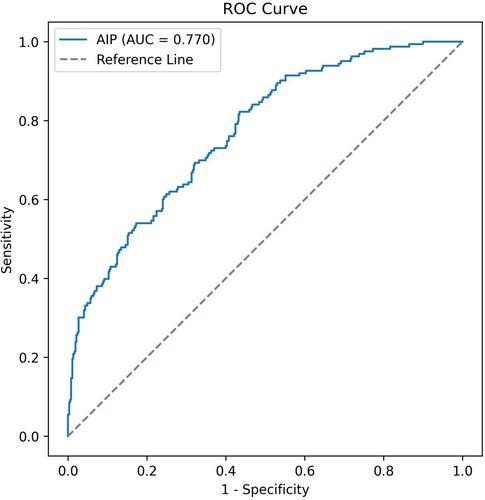Atherogenic Index of Plasma (AIP): The Most Accurate Indicator of Overweight and Obesity Among Lipid Indices in Type 2 Diabetes—Findings From a Cross-Sectional Study
Abstract
Background
This study aimed to evaluate the relationships of conventional and calculated lipid indices with obesity or overweight in patients with type 2 diabetes (T2D).
Methods
In this cross-sectional study, all participants were categorised into three groups: normal weight (18 ≤ BMI < 25), overweight (25 ≤ BMI < 30) and obese (BMI ≥ 30). Conventional lipid indices, including triglyceride (TG), total cholesterol, LDL-C and HDL-C, were measured. Lipid indices, including the atherogenic index of plasma (AIP), non-HDL-C, TC/HDL-C, LDL-C/HDL-C, non-HLD-C/HDL-C (atherogenic index, AI) and lipoprotein combine index (LCI), were calculated. The associations of these lipid indices with obesity and overweight status were evaluated using univariate and multivariate multinomial logistic regression analyses.
Results
In this study, 2661 patients with T2D, including 651 patients with normal weight, 1144 with overweight, and 866 with obesity, were recruited. According to a multinomial logistic regression analysis after adjustment for multiple confounders, the odds ratio (OR) was greater for the AIP than for other conventional and calculated lipid indices in overweight and obese patients with T2D. The AIP had a significant relationship with overweight, with an OR of 4.79 (95% CI: 1.65–13.85), and it had a significant relationship with obesity, with an OR of 13.64 (95% CI: 3.96–47.04). According to the ROC curve, with a cut-off value of 0.68, AIP could predict obesity with 82% sensitivity and 55% specificity (AUC = 0.770, 95% CI: 0.729–0.812, p < 0.001).
Conclusion
Compared with other conventional and calculated lipid markers, the AIP is most strongly associated with obesity and overweight in patients with T2D.


 求助内容:
求助内容: 应助结果提醒方式:
应助结果提醒方式:


